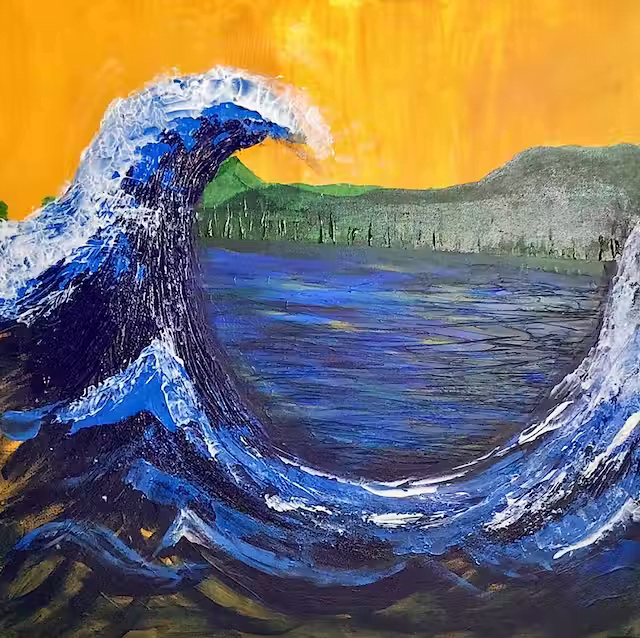
A Brief Introduction to the Many Schools of Art
Modern Art
Exploring the Influential Schools of Art: A Journey Through Visual Art
Art is constantly exploding in variety with its multitude of schools, movements, and styles that have evolved over the centuries. Each school of art offers a unique lens through which to understand the human condition, societal changes, and individual creativity. This blog post serves as an introduction to some of the most influential schools of art that have shaped our visual art world. Note that this art list is not exhaustive but a springboard into the rich and wide-ranging universe of artistic expression.
Renaissance: The Dawn of a New Perspective
Emerging in the 14th century, the Renaissance marked a pivotal shift towards realism, proportion, and the use of perspective in art. Artists like Leonardo da Vinci and Michelangelo sought to capture the beauty of the natural world and the human form with unprecedented accuracy, laying the foundation for modern fine art. This movement’s impact is still evident in art galleries today, where Renaissance masterpieces continue to inspire artists and art lovers alike. Link to a comprehensive resource like the Metropolitan Museum of Art’s Renaissance Collection to provide readers with more in-depth information about the Renaissance period.
Impressionism: Capturing Fleeting Moments
In the late 19th century, Impressionists such as Claude Monet and Pierre-Auguste Renoir broke from tradition by painting air (outdoors) to capture the transient effects of light and color. Impressionism emphasized swift brushstrokes and a vibrant palette to convey the sensation of a moment. Today, Impressionism is a popular subject in painting classes at art schools, where students learn to replicate its distinctive style. For Impressionism, consider linking to the Musée d’Orsay’s Impressionist Collection which houses some of the most famous works of this movement.
Cubism: Fragmenting Reality
Pioneered by Pablo Picasso and Georges Braque in the early 20th century, Cubism deconstructed objects into geometric forms, presenting multiple perspectives within a single plane. Cubism’s radical approach challenged conventional perceptions of form and space, greatly influencing various fields in art and design services, including interior design. Many interior designers draw on Cubist principles to create dynamic, unconventional spaces that engage the viewer’s sense of perspective.
Abstract Expressionism: The Emotion of Abstraction
Originating in the 1940s, Abstract Expressionism was characterized by spontaneous, symbolic forms and a focus on conveying emotional or expressive content. Artists like Jackson Pollock and Mark Rothko emphasized the act of painting itself, inviting viewers to interpret their canvases as emotional landscapes. Abstract Expressionism remains a powerful force in the art world, continuing to influence contemporary visual art and the approach of artists in various galleries.
Pop Art: Blurring Art and Popular Culture
In the 1950s and 1960s, Pop Art emerged as a challenge to traditional fine art by incorporating imagery from popular and commercial culture. Artists like Andy Warhol and Roy Lichtenstein used mass-produced visual commodities to blend high art with consumerism and irony, leading to new dialogues between art and gallery spaces. Pop Art’s influence is evident not just in galleries but also in modern interior design, where elements of popular culture are used to create vibrant, playful environments.
Contemporary Art: A Mirror to the Modern World
Contemporary art is an ever-evolving category that encompasses a wide range of practices and themes reflective of today’s global issues, technology, and diversity. It defies easy categorization, embracing an experimental and interdisciplinary approach. As a result, contemporary art has become a central focus in art galleries and art news outlets, constantly pushing the boundaries of what visual art can be.
Continue Your Experience with ZicoArt
This introduction is just the beginning of a vast exploration of art and its many schools. Each movement defines an era while offering insights into the evolving nature of artistic expression. Whether you’re an artist, an interior designer seeking inspiration, or an art lover looking to deepen your knowledge, ZicoArt invites you to dive deeper into these and other movements to fully appreciate the beauty of the art world.
Stay Informed and Inspired with ZicoArt
For those eager to explore further, subscribe to our ZicoArt blog! Our platform is dedicated to celebrating the magnificence and complexity of art, providing a space for artists to showcase their work, and offering art lovers a chance to discover and engage with new styles and movements. As we continue to explore more schools of art, stay updated on all art news and deepen your understanding of the innumerable ways art connects us all.
Subscribe Now to continue your experience through the many schools of art and to stay informed about all the latest in the art world with ZicoArt! Join us and discover the art of possibility.


